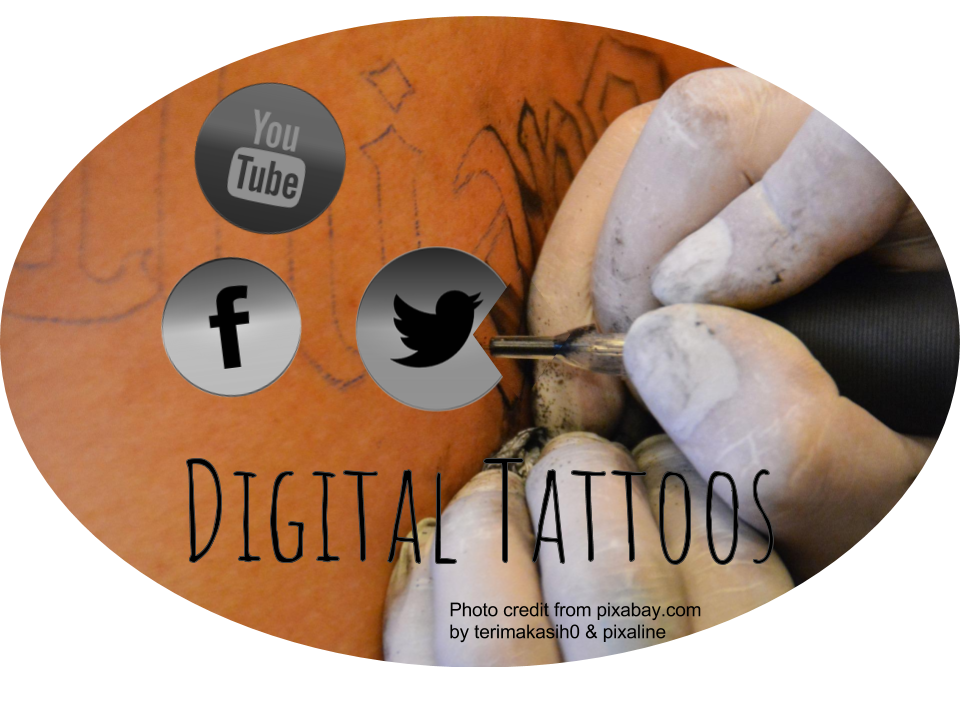Stimulus from Digital Tattoos
A phone dings, a tweet chirps, or a Snapchat clicks. A student’s, and probably mine as well, the brain lights up with a small dose of dopamine. A response to the operant conditioning of having constant access to technology, social lives, and information. In an article in Psychology Today, Dr. Weinschenk posted that the constant influx of stimuli and access have caused our bodies to become addicted to dopamine and making us exhausted and desiring more (2012). This has caused students and teachers to develop new ways to cope and transition from this deep form of distraction. This is a part of Riddle’s Nine Elements of Digital Citizenship (2015) with Digital Literacy, knowing how to handle and use the technology appropriately. Although this constant barrage of stimuli is in our student’s lives, I see a benefit to this if used appropriately. If the learning shifts from a lower level of knowledge-based understanding to application and synthesis of learning. The all-the-time access to information can start the students at the knowledge base and allow them to more deeply explore and elaborate on the information found. Now students know who is buried in Grant’s tomb, but they can determine Grant’s death or come up a new rationale for Grant’s existence.
Digital footprint or more correctly digital tattoos are the trails left behind of the locations, searches, data inputs, and the information is given out with the internet. I say more correctly digital tattoo as a component of the digital footprint is permanent. Posts, pictures, comments, and locations visited is almost always tracked, and this content can be linked and tracked to develop an entire profile of each person. These tattoos can be intentional, like public posts, pictures, tweets, reviews, and other items that specifically created by the person. They can also be unintentional when a person does a search for a product, a term, shop for a resource, or download a song. Both are trackable, relatable and personable resources of your presence on the internet. However, the digital tattoo does not have to be scary, not useful component of the public profile. For a student to cultivate a positive digital tattoo, they must be cognizant of what they do on the internet. Being cautious about what they post, ie. photos, tweets, comments, etc., that sheds a positive light on their presence. Also, create traffic on the internet that is positive, is just as beneficial. Creating posts that are positive, grammatically correct, and supportive can beneficial to having a positive digital tattoo. These positive post can support a student when looking for a college, applying for scholarships, or applying for a job. George Couros, the author of The Innovator’s Mindset, wrote a blog post entitled “3 Things Students Should Have Before They Leave High School”. In the blog post, George recommends that all students should have a professional social network presence, a digital portfolio, and an about.me page. With these tools, he states that they will “not only help them share their abilities but help them make the connections to utilize those same abilities” (Couros, G., 2016). At these locations, students should make sure that both their hard skills (academics, mechanical skills, etc.) are presented, but also their soft skills (communication, collaboration, creativity, tenacity, etc.). As many times employers are looking for the soft skills but will train the hard skills. Students can also list their accolades, examples of their projects and work that they have completed, and organizations that they are a part of. Add personal details and touches (like a personalized welcome video) could show a future employer or college that they are the candidate that will fit the culture of the team or organization.
References
Couros, G. (2016, June 11). 3 things students should have before they leave high school. Retrieved September 05, 2017, from https://georgecouros.ca/blog/archives/5025.
Ribble, M. (2015). Digital citizenship in schools: nine elements all students should know. Eugene, OR: International Society for Technology in Education.
Weinschenk, S. (2012, September 11). Why we're all addicted to texts, Twitter and Google. Retrieved September 05, 2017, from https://www.psychologytoday.com/blog/brain-wise/201209/why-were-all-addicted-texts-twitter-and-google.
Resources to Create a Positive Digital Tattoo
TEDxHollywood. (2014, July 24). Digital footprints | Michelle Clark | TEDxHollywood. Retrieved September 16, 2017, from https://www.youtube.com/watch?v=NlGyTp4Nd4M
About.me - create a page specifically about you. Use this a starting point for people to see your positive digital footprint.
YOUR DIGITAL TATTOO – DO YOU KNOW WHAT IT LOOKS LIKE OR HOW TO DESIGN ONE? - CUE - blog post on how to develop a positive digital tattoo.

Be Internet Awesome - Created by Google to drive awareness and literacy of internet safety.
Google. (2017, June 06). The #BeInternetAwesome Challenge. Retrieved September 17, 2017, from https://www.youtube.com/watch?v=uDlctGZjhco.
